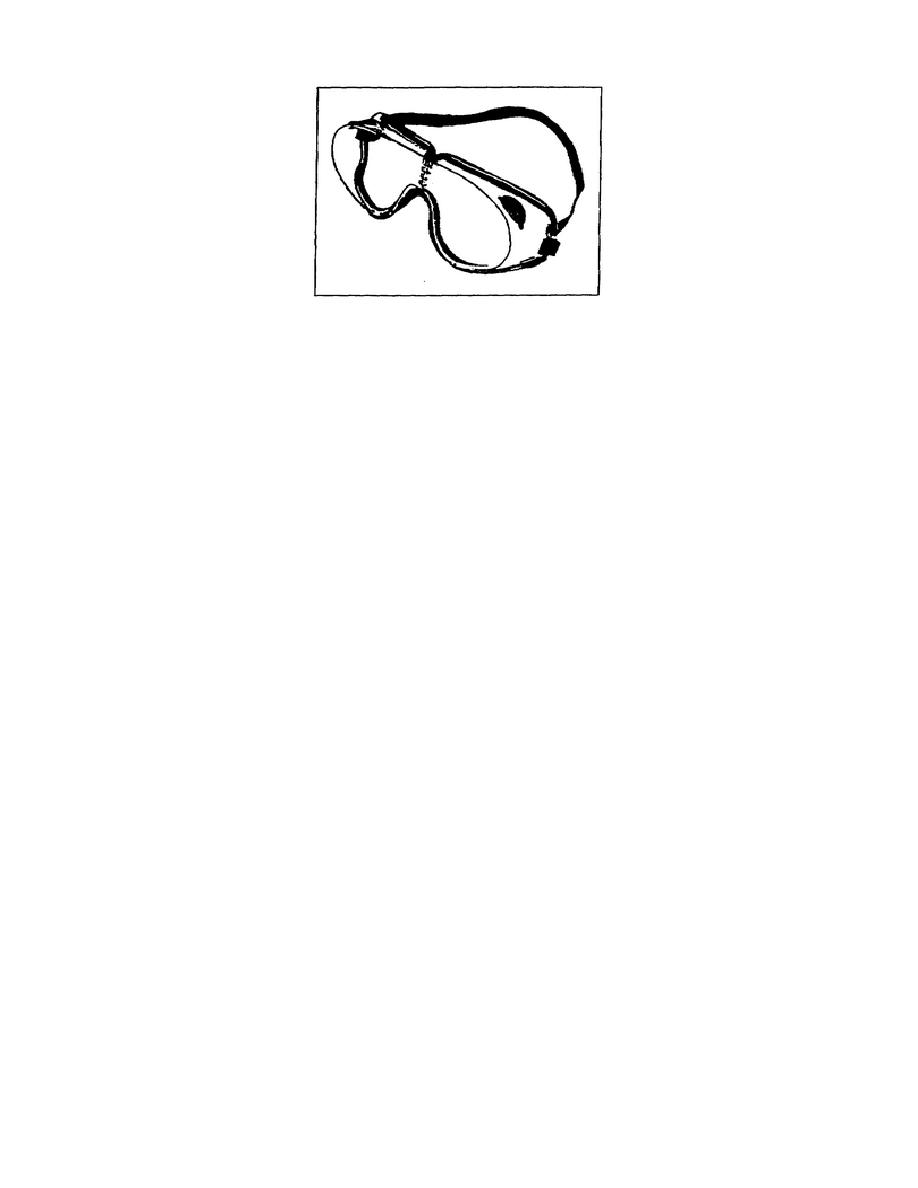
Figure 1-4. Safety goggles
(4) Protective clothing. The following safety rules apply to protective clothing. You should-
Wear clean clothing that covers you as much as possible to avoid skin contact with
painting or cleaning materials.
Wear clothing that is safe for work conditions. Clothing with cuffs, tears, rips, or
loose pockets; loose ties; and jewelry are potential causes of accidents.
Wear safety helmets when using abrasive-blasting media.
Wear hard hats and steel-toed safety shoes wherever there is any possibility of danger
from falling objects.
Wear shoes that have nonskid rubber soles when working in enclosed spaces or where
flammable vapors may be present.
Wear acid-proof clothing when handling acid cleaners.
Wear acid-proof air-supplied suits when using acid cleaning materials in enclosed
areas.
(5) Buddy system. Personnel should never work alone in hazardous areas. Assign at least
two men to such jobs, and ensure that each is visible to the other at all times during the painting
operation. Then, if one should have an accident, the other can immediately come to his aid.
1-3. Responsibilities of the Foreman. As the foreman, you should lay out the work and manage
projects in such a manner as to produce the safest possible conditions. The safety of personnel is one of
your prime responsibilities. To ensure safe working conditions, use a safety checklist (Figure 1-5)
before a job gets underway.
EN0562
1-6


 Previous Page
Previous Page
